What makes for a great black and white image?
Abi Mullens
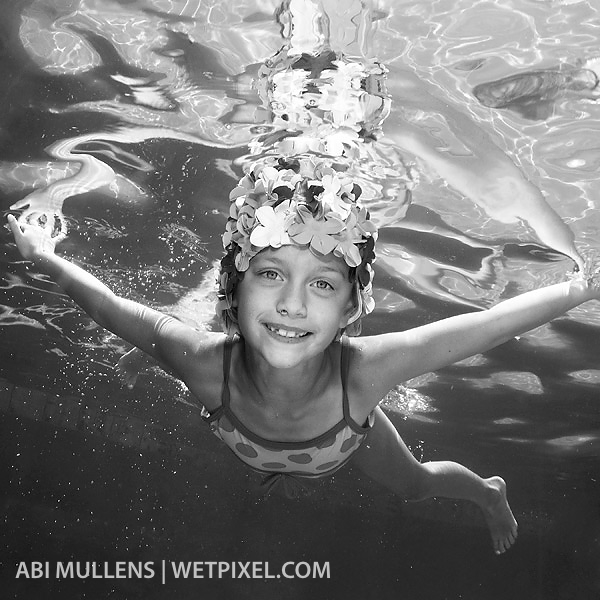
There are certain elements in a successful black and white photograph that can be applied to underwater photography as well. Since this is where my own underwater photography originated, I’ve learned to focus on simple subjects, composition and high contrast.
By removing color from a photograph, components that may have otherwise blended in to the background become more interesting. In underwater photography, a black and white image is a perfect moment to accentuate interesting reflections on the water surface.
To see more of Abi’s work, please visit her website
David Barrio
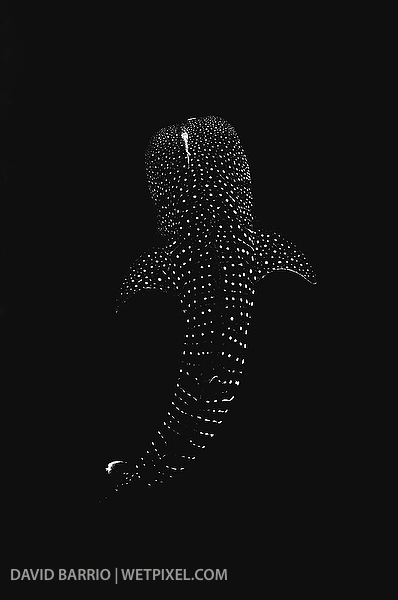
To me a black and white image needs to add something that color does not. I see a lot of black and white converted images that are plain and I just wonder: what does black and white add do this image? I believe that in in many of theses cases, color would have been better.
The second thing that I like about black and white is contrast. When I started entering black and white pics in splash-in contests (where straight jpgs are entered and no Photoshop enhancement is allowed). I had a Nikon D200 and its black and white mode delivered very “flat” images which lacked contrast. More modern cameras have improved a lot in this matter although most people (including me) just do black and white conversions from a raw file with all the control and tools we need, unless we can´t for some reason (e.g. contests…).
My example is a very “contrasted” (if such a verb exists…) whale shark that I named “Connect the dots”. Everything is black and we only see the shark by the silhouette created by its dots. It had a Honorable Mention at GDT European Wildlife Photographer of the Year a few years ago.
To see more of David’s work, please visit his website.
Martin Edge
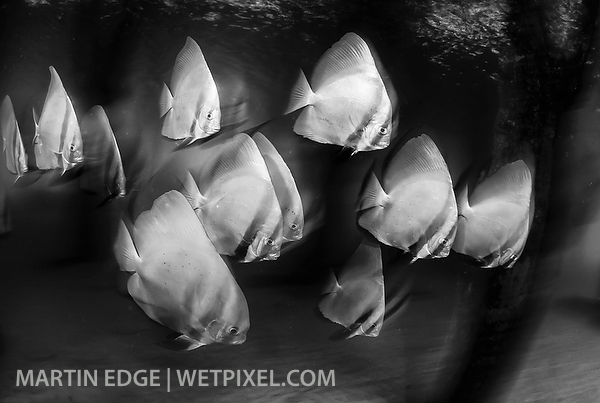
In this day and age, converting an image into black & white, be it above or below water, is very easy to do. However the subject matter, theme or topic needs some thoughtful consideration. The challenge in my opinion is to understand how the color image you see with your eyes and through your viewfinder will translate into a monochrome image. In my experience the main thing to consider is how your idea will appear in various shades of grey.
Not easy! Our eyes see the world in color but in order to see in monochrome it’s important to train them to see as tones of grey.
This mono study of a small batfish school was shot below the pier in Lankayan just off the coast of Borneo. I opted for a twilight shoot in order to capture the batfish with motion blur. I was in the shadow of the pier in 3m or 4m of water. The small school never ventured away from the pier. The water color beneath was a drab blue and the reflection of silvery batfish was to me an obvious mono conversion.
Ellen Cuylaerts
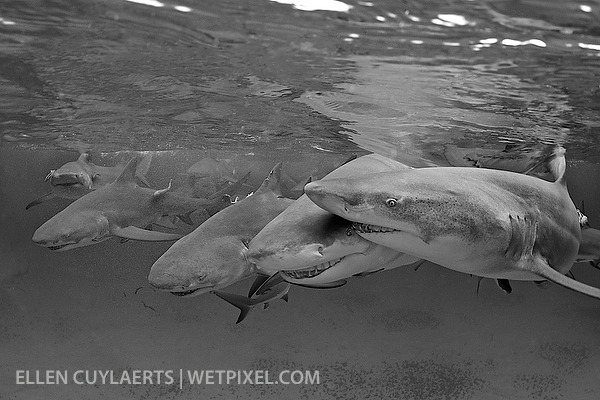
When I want to grab the essence of an encounter in an image (an emotion, a movement or an expression) I choose black and white. Stripping an image of colorful distractions leaves a very pure and naked picture, that for some appeals to raw emotions.
To see more of Ellen’s work, please visit her website.
Kurt Amsler
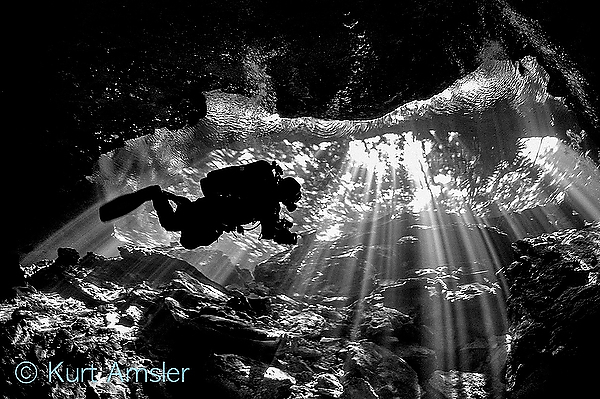
Black and White is considered as “the art” in photography!
Black and White is, in general, natural light photography, or at most, a small amount of “fill in flash”. Too much strobe light will “kill” the “black” and the whole expression. Therefore the photographer must be able to “read” the light, to achieve the balance and the contrast necessary. At the times of silver films, B/W emulsion and special developing procedures made the best job. Nowadays on digital the “original” can be in color and converted to Black and White. The computer will replace the photolab!
Post capture work is necessary to increase contrast and saturation to the point when the image expresses “Black and White”. You can also use the “unsharp masking” or a “grain filter” in your processing software, to achieve the touch of real B/W film.
To see more of Kurt’s work, please visit his website.
Jason Bradley
jasonbradley_120713_10990-2A.JPG )
Many underwater photographers dive and think about capturing that unique animal, that unique behavior, and that moment that is rare and exciting. But getting into black and white photography puts me in a different frame of mind. Instead, I tend to put the rare things aside and focus on translating things that are more common underwater. Black and white photography, and the beauty found in a good dive, is often about textures, patterns, simple lighting, shapes, contrast, and mood. These things can always be found underwater.
To see more of Jason’s work, please visit his website.
Page 1: Aaron Wong, Daniel Botelho, Stephen Frink, Tony Wu.
Page 2: Alex Mustard.
Page 3: Abi Mullens, David Barrio, Martin Edge, Ellen Cuylaerts, Kurt Amsler, Jason Bradley.
Page 4: Douglas Seifert.
Page 5: Jean Bruneau, Amanda Cotton, Christian Vizl, Brian Skerry, Mike Veitch.